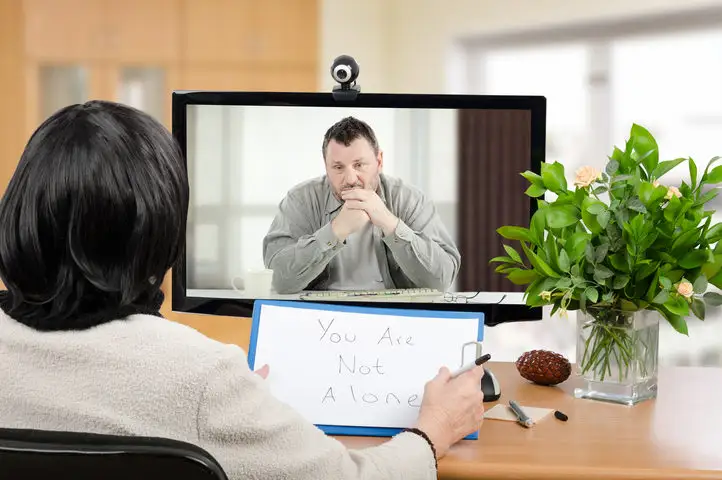Are you tired of feeling overwhelmed by anxiety or bogged down by persistent worries? Imagine a world where you could confront those fears head-on and reclaim control over your life. Enter Cognitive Behavioral Therapy (CBT) – your key to unlocking a brighter mental state. And within this powerful realm of CBT, there’s a game-changer called exposure therapy.
In this blog, we’re diving into a simple yet transformative journey. Picture this: you, breaking free from the shackles of anxiety, one step at a time. We’re about to unravel the secrets of exposure therapy, a beacon of hope for those seeking to conquer mental health challenges. Let’s dive in!.
Contents
- 1 Understanding CBT: Your Mental Compass
- 2 The Role of Exposure Therapy: Confronting Fears, Embracing Freedom
- 3 How CBT Exposure Therapy Works: Your Personal Journey to Liberation
- 4 What is an Example of a CBT Therapy?
- 5 Benefits of CBT Exposure Therapy
- 6 Are There Any Side Effects or Risks Associated with CBT Exposure Therapy?
- 7 Can CBT Exposure Therapy Be Done Remotely?
- 8 Conclusion
Understanding CBT: Your Mental Compass
Navigating the landscape of mental well-being begins with grasping the essence of Cognitive Behavioral Therapy (CBT). Imagine it as your trusty mental compass, guiding you through the twists and turns of your thoughts and emotions.
In simple terms, CBT is your toolkit for reshaping negative thought patterns and behaviors. It’s like learning a new language—the language of understanding and transforming the way you perceive and react to the world around you. So, let’s embark on this journey of comprehension, where the power of CBT becomes your ally in the pursuit of a healthier mind.
The Role of Exposure Therapy: Confronting Fears, Embracing Freedom
 Ever find yourself held captive by fears and anxieties, yearning for a way out? Exposure therapy emerges as the liberator, ready to help you confront fears head-on and break free from the chains of anxiety. In the realm of Cognitive Behavioral Therapy (CBT), exposure therapy stands as a game-changer. Let’s dive into its crucial role:
Ever find yourself held captive by fears and anxieties, yearning for a way out? Exposure therapy emerges as the liberator, ready to help you confront fears head-on and break free from the chains of anxiety. In the realm of Cognitive Behavioral Therapy (CBT), exposure therapy stands as a game-changer. Let’s dive into its crucial role:
- Breaking Chains: Exposure therapy acts as a personal hero, empowering you to face fears and liberate yourself from anxiety’s grip.
- Pivotal in CBT: Within the comprehensive landscape of CBT, exposure therapy plays a pivotal role, focusing on strategic and gradual confrontation.
- Strategic Confrontation: Unfold the narrative of exposure therapy as the catalyst for overcoming mental hurdles, offering a transformative experience.
Get ready to explore the transformative power of confronting your fears and embracing newfound freedom through exposure therapy.
How CBT Exposure Therapy Works: Your Personal Journey to Liberation
Okay, let’s break down the nitty-gritty of how this exposure therapy magic works. Think of it as your guide to conquering fears and regaining control over your life. Here’s the lowdown in a chatty, easy-to-follow style:
- Assessment: First things first—your therapist is like your anxiety detective. Together, you uncover the triggers and get a handle on what’s cooking in that brain of yours.
- Goal Setting: It’s like planning a road trip, but instead of destinations, you’re setting goals. Your therapist helps map out achievable objectives, making sure you’re on the right track to mental well-being.
- Hierarchy Creation: Imagine this as your fear ladder. You start with the smaller fears, the ones that make your heart race a bit, and gradually climb to the big leagues. It’s all about baby steps.
- Exposure: Now comes the action! You face those fears, one at a time, with your therapist by your side. Picture it like a safe space where you can confront the scary stuff without feeling overwhelmed.
- Response Prevention: This part is like rewiring your brain. Your therapist helps you respond differently to those triggers, steering clear of the old habits that kept you stuck.
Embark on this step-by-step journey, where each phase is a deliberate stride toward overcoming fears and embracing a life liberated from persistent anxieties.
What is an Example of a CBT Therapy?
Now, you would probably be wondering, “What does CBT therapy actually look like in action?” Well, buckle up as we dive into real-life examples that showcase the power of Cognitive Behavioral Therapy (CBT) in transforming lives:
Fear of Flying – Conquering the Skies
Imagine someone paralyzed by the fear of flying. CBT therapy for this individual might unfold like this:
- Step 1: Picture This: Initially, the person might start by simply looking at pictures of airplanes, creating a safe space to confront the fear from a distance.
- Step 2: Airport Adventure: The next level involves visiting an airport. It’s like dipping a toe into the water before taking the plunge. The anxiety is there, but it’s manageable.
- Step 3: Up, Up, and Away: The grand finale—taking short flights. Exposure therapy kicks in, helping the individual confront the fear head-on and, over time, rewiring their brain to associate flying with something other than fear.
Social Anxiety – Gradual Unveiling
For someone grappling with social anxiety, CBT therapy might take a different route:
- Step 1: Hello, Stranger: Initiating exposure by making brief phone calls or interacting with strangers in controlled environments.
- Step 2: Face-to-Face Connections: Progressing to face-to-face interactions, perhaps in a small, supportive group setting.
- Step 3: Social Flourish: The ultimate goal—comfortably engaging in social situations, from parties to meetings, with newfound confidence.
These examples illustrate how CBT therapy tailors its approach to the unique challenges individuals face, proving that facing fears gradually can lead to transformative outcomes. It’s not just therapy; it’s a personalized journey toward a life unburdened by anxiety.
Benefits of CBT Exposure Therapy
 So, you’re probably thinking, “What’s in it for me?” Brace yourself, because the benefits of Cognitive Behavioral Therapy (CBT) exposure therapy are like a bouquet of positive changes, each petal contributing to your mental well-being. Let’s unpack the goodness:
So, you’re probably thinking, “What’s in it for me?” Brace yourself, because the benefits of Cognitive Behavioral Therapy (CBT) exposure therapy are like a bouquet of positive changes, each petal contributing to your mental well-being. Let’s unpack the goodness:
- Lasting Results
CBT exposure therapy isn’t a quick fix; it’s a long-lasting solution. Many individuals report sustained relief from their fears and anxieties, providing a foundation for ongoing mental well-being. - Empowerment
Confronting fears isn’t just about facing the scary stuff; it’s about feeling empowered. Exposure therapy equips you with the tools to take control of your thoughts and reactions, fostering a sense of strength and autonomy. - Adaptability
One size does not fit all, and CBT exposure therapy knows it. It’s like a chameleon, adapting to various phobias and anxieties. Whether it’s fear of heights, spiders, or social situations, exposure therapy tailors itself to your unique needs. - Holistic Approach
Unlike a Band-Aid for your mind, CBT exposure therapy goes deep. It addresses both the cognitive (think: your thoughts) and the behavioral (think: your actions) aspects of anxiety. It’s a tag team effort for a comprehensive mental makeover. - Positive Outcomes
Picture a life where your responses to triggers are healthier, and your fears no longer hold you hostage. That’s the promise of CBT exposure therapy—positive outcomes that extend beyond the therapy sessions.
In essence, the benefits aren’t just about easing the pain temporarily. They’re about rewriting your mental script, giving you the tools to navigate life’s challenges with resilience and newfound freedom. CBT exposure therapy isn’t just therapy; it’s a journey towards a more empowered and balanced you.
Are There Any Side Effects or Risks Associated with CBT Exposure Therapy?

Now, let’s talk real talk. You might be wondering, “Is this exposure therapy thing too good to be true? Are there any catches?” Let’s get in and address the common concerns:
Discomfort During Exposure
- Just like physical exercise can be a bit uncomfortable, exposure therapy may stir up some emotions. It’s part of the process, but rest assured, your therapist is there to guide you through it.
Varied Individual Responses
- We’re all unique, right? The same goes for how we respond to therapy. What works like a charm for one person might be a bit challenging for another. It’s a personalized journey, and individual responses may vary.
Temporary Increase in Anxiety
- Think of it like stirring up the dust before it settles. As you confront fears, there might be a temporary uptick in anxiety. It’s a sign that the therapy is hitting the right notes, and your therapist will help you navigate through it.
Need for Commitment
- CBT exposure therapy requires commitment. It’s not a one-time deal; it’s a journey. Showing up for sessions and actively participating in the process are key to reaping the full benefits.
Consultation with a Qualified Therapist
- While CBT exposure therapy is generally safe, it’s crucial to embark on this journey under the guidance of a qualified therapist. They’re like your trusty navigator, ensuring you’re on the right course.
In a nutshell, it’s about separating fact from fiction. CBT exposure therapy is designed to be a safe and effective journey, but like any adventure, there may be bumps along the road. The key is having a skilled guide—your therapist—and embracing the discomfort as a stepping stone to your ultimate destination: a life unburdened by fear and anxiety.
Can CBT Exposure Therapy Be Done Remotely?

Now, let’s talk convenience. In a world where everything is just a click away, you might be wondering if Cognitive Behavioral Therapy (CBT) exposure therapy can make its way to your screen. The answer? A resounding yes, and here’s how:
Virtual Liberation
- Thanks to the wonders of technology, exposure therapy can seamlessly transition to the virtual realm. Picture this: facing your fears from the comfort of your own space. No commute, no waiting rooms—just you and your therapist, connected through the magic of the internet.
TherapyMantra
- Enter platforms like TherapyMantra, where virtual sessions bring the therapist’s expertise right to your doorstep, or rather, your screen.
MantraCare Convenience
- MantraCare takes it a step further, offering a range of therapeutic services, including CBT exposure therapy, all within the virtual realm. Your journey to mental well-being is just a click away.
Flexible Sessions
- Remote CBT exposure therapy offers the flexibility to schedule sessions that suit your lifestyle. Whether it’s early morning or late at night, you have the freedom to engage in therapy when it works best for you.
Technology as Your Ally
- Embrace the era of virtual mental health care, where technology becomes your ally in the pursuit of a liberated mind. The barriers of location fade away, and the focus shifts entirely to your journey toward healing.
So, can CBT exposure therapy be done remotely? Absolutely. It’s about bringing the transformative power of therapy to your fingertips, breaking down barriers, and making mental well-being accessible, anytime, anywhere.
Conclusion
In the grand tapestry of mental well-being, we’ve explored the transformative realms of Cognitive Behavioral Therapy (CBT) exposure therapy. From confronting fears to embracing newfound freedom, each step is a testament to the resilience within you.
As you navigate the path toward a liberated mind, remember that discomfort is the echo of growth, and facing fears is the key to lasting change. Whether you’re battling anxiety, phobias, or the shadows of the mind, CBT exposure therapy stands as a beacon of hope.
And if you find yourself yearning for a breakthrough, if the weight of anxieties feels heavy, consider taking that courageous step. Affordable online therapy is within reach, and TherapyMantra is here to guide you. Book a trial online therapy session today and embark on a journey to discover the strength and freedom that lie within you.


